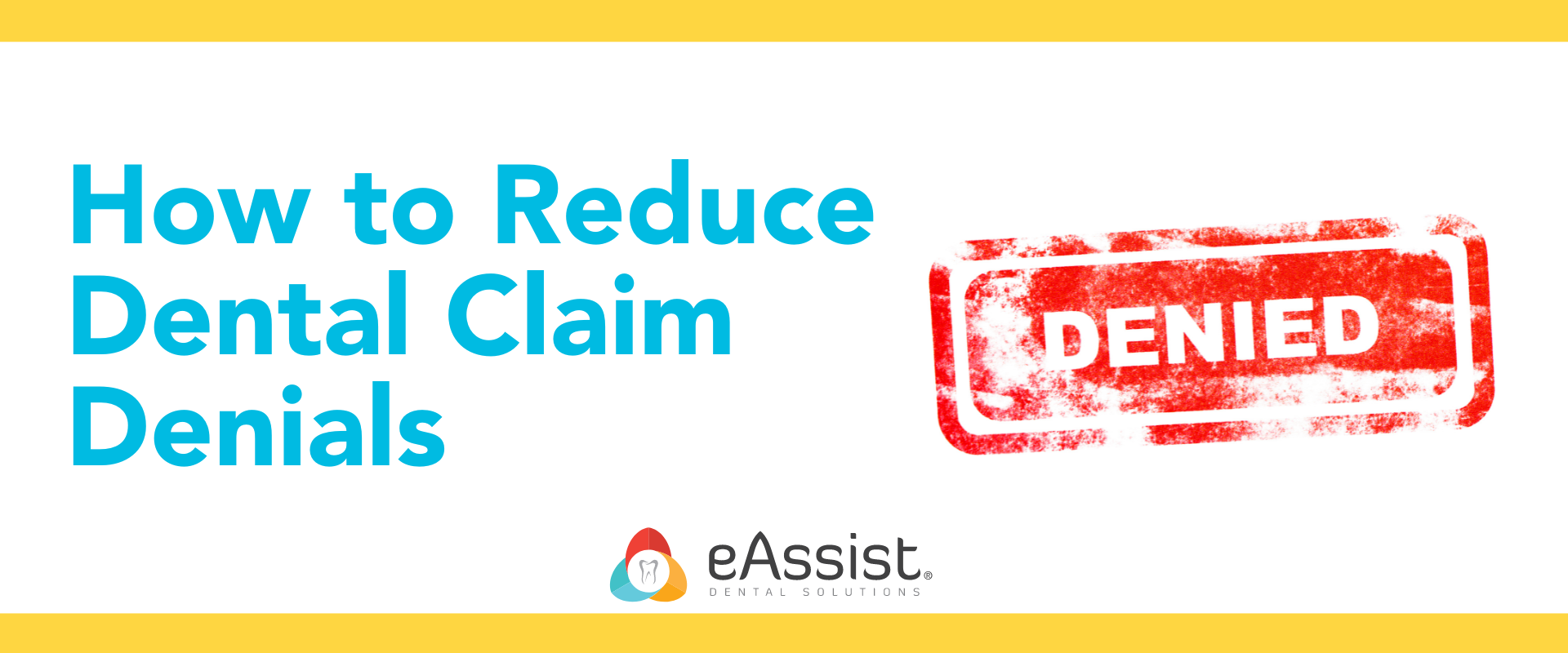Dental billing requires a lot of effort. Between credentialing doctors, verifying insurance coverage, applying correct CDT codes, completing ADA claim forms, and attaching documents, it takes up a lot of the workday. So, it can be incredibly frustrating when a claim has been denied and all that effort has been wasted, but, with a little extra knowledge you can reduce dental claim denials and, instead, increase revenue. In the following, we will review common denial scenarios and ways to avoid them.
Treating Doctor is Out-of-Network
This one can sneak up on you because, often, if the treating doctor is out-of-network the insurance will pay out-of-network fees. While that is true for several carriers there are others that won’t and will instead issue a denial with no recourse for appeal. To make matters even more complicated, some carriers have plans that pay out-of-network as well as plans that don’t. Therefore, it’s especially important to know each plan’s out-of-network policy prior to billing the claim. When verifying insurance, always confirm the out-of-network policy of the patient’s plan. If it excludes payment, be sure that the treating doctor is credentialed with the plan and, if there is no credentialed doctor available, let the patient know up front that it won’t be covered in order to avoid any unpleasant surprises down the line.
Annual Maximum Met
The vast majority of dental plans have an annual maximum amount of insurance funds paid per benefit year. The average maximum is between $1000-2000 and once it’s reached the plan will not issue any more payments and the claim will be denied. When verifying insurance, always confirm the plan’s annual maximum and how much of it has already been issued for the current benefit year (for example, the annual max is $1500 and $1025.75 has already been issued). Also, be sure to confirm when the annual maximum resets as most do every calendar year but some only roll over on the plan effective date (for example, July 1st). Since most reset every January 1st, be particularly vigilant when appointments are scheduled in the latter part of the year as maximums are frequently met by then.

Amount Applied to Deductible
At the moment this denial is not that common, but, as dental and medical care continue to integrate, it will start appearing more frequently. Most dental plan deductibles are between $25-100, so, aside from basic treatment, this denial rarely applies to them, but many patients have healthcare plans where the deductible starts at $1600. Increasingly, more and more treatment, especially oral surgery, is being billed to medical insurance plans, meaning the deductible will cover a significant amount of the treatment billed. Make sure the patient has met it before billing the insurance. When medical coverage applies, verify it just as you would dental coverage, and clarify both the deductible amount and whether the patient has already met it, prior to starting treatment, in order to avoid a denial.
Policy Termed Prior to Date of Service
When a patient gives you their insurance card, don’t assume it’s valid. During the insurance verification process, double-check the term date as many people forget to update their cards. Also, when dealing with existing patients, don’t assume their coverage is still valid, and always double-check it before each appointment. This is especially important at the beginning of the calendar year as often employers will update an insurance plan or a patient will have canceled it. Although, frequently all that is needed is an insurance update, initially sending a claim to the wrong carrier will cause a delay in payment and possibly miss the timely filing limit of the correct plan.
Timely Filing Limit Missed
Speaking of timely filing limits, each carrier has a specific amount of time they allow claims to be submitted and some are as low as 30 days. When a claim is denied for timely filing there is no chance of appeal unless it can be proved that it was initially filed within the correct time frame. In order to avoid this, it’s best to bill dental claims daily. In a busy office, that’s not an easy task so consider outsourcing to ease the pressure on office staff.

Frequency Limit Met
Several procedures, from x-rays to restorations, have frequency limits and if those limits have already been met, the claim will be denied, again with no recourse for appeal. When verifying insurance, be sure to confirm the frequency limits applicable to certain procedures and whether or not they’ve been met.
This is especially important when completing a replacement restoration, like a denture or crown. When asking a patient when the original was placed, try to get as close to the exact date of prior placement as possible. Most patients will tell you it was “over x amount of years ago” but, as we know, our memories can be faulty. Double-check the chart notes to see if the prior placement was within the frequency limit. If they were treated in a different office give them a call (or have the patient call them) to obtain the prior placement date. It may seem like extra work but it will be worth it to prevent a frequency denial.
These are a few examples of how to reduce dental claim denials when billing to insurance companies and, although it may require a little extra prep work it will be worth it in the end. To make the billing process easier, consider outsourcing your insurance verification and dental billing. At eAssist, the Success Consultants who use our platform know the various ins and outs of dental plans and will ensure your claims are billed correctly. Complete the form below to find out more.








0 Comments